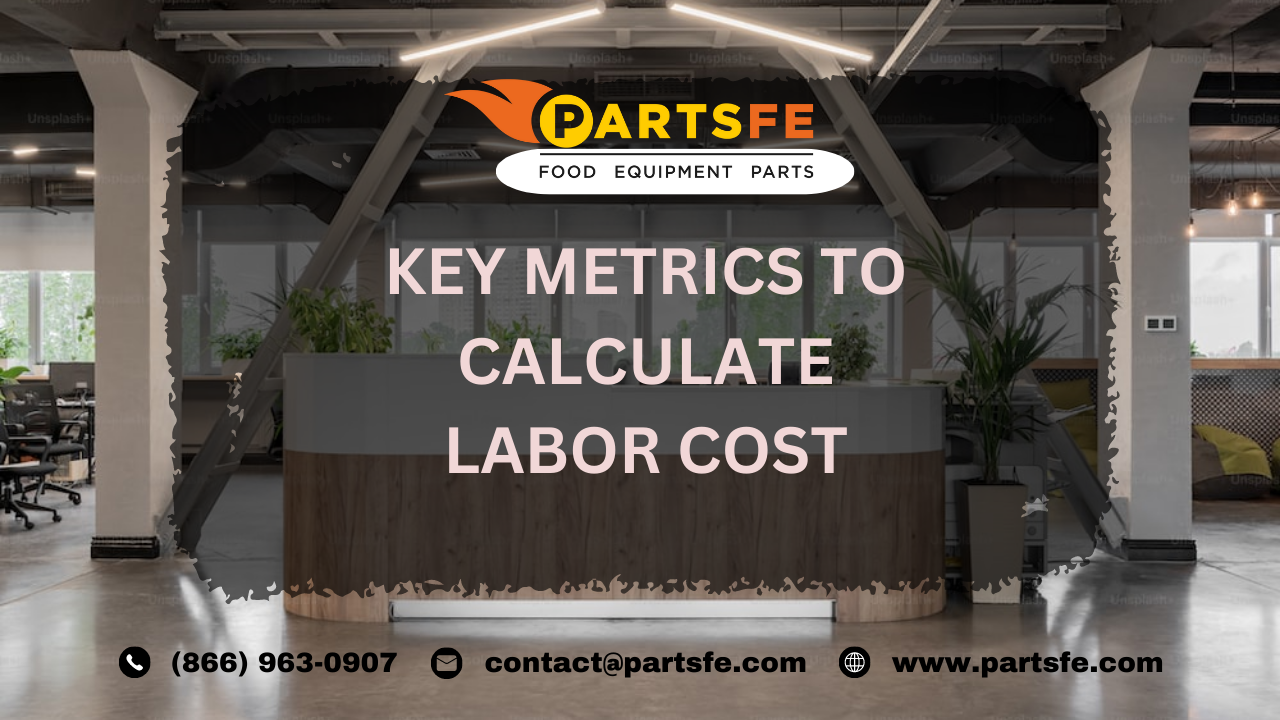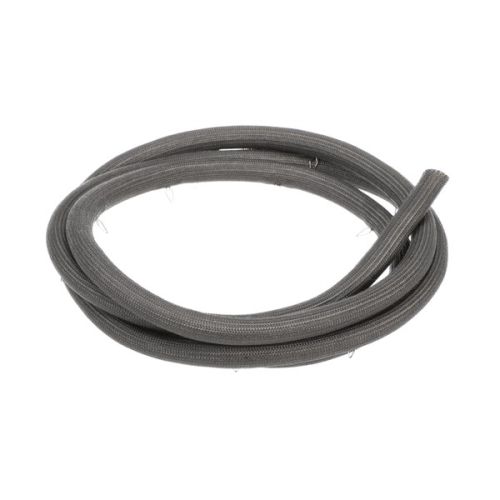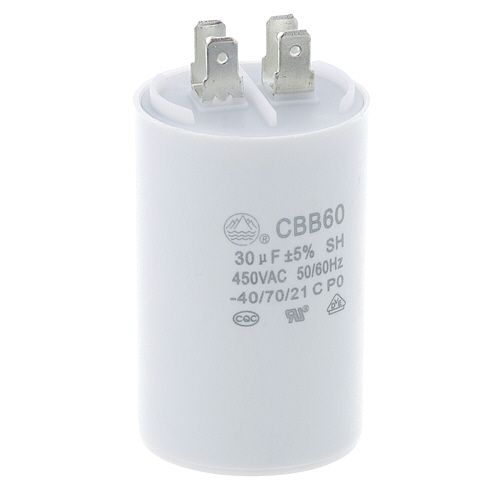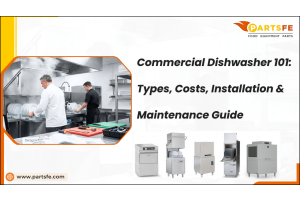Mastering Restaurant Labor Cost Calculation: Key Metrics for 2024
In the dynamic landscape of the restaurant industry, managing labor costs is a critical aspect of ensuring profitability and success. As we enter the year 2023, restaurant owners and operators face new challenges and opportunities when it comes to calculating labor costs effectively. The rising minimum wages, evolving labor laws, and the ongoing labor shortage further emphasize the importance of mastering labor cost calculations.
Top selling products
This article serves as a comprehensive guide for restaurant owners and managers, providing insights into the key metrics and strategies necessary to navigate the labor cost landscape in 2024. By understanding and implementing these metrics, restaurant professionals can optimize labor price, streamline operations, and enhance overall profitability in the face of a changing industry.
| Table of contents: What Is Labor Cost? What Are Labor Costs? How to Calculate Labor Cost In Commercial Restaurant? How to Calculate Labor Cost Percentage? |
What Is Labor Cost?
Restaurant labor cost encompasses the overall expenditure incurred on compensating the workforce relative to the sales generated by a restaurant within a specific timeframe. This includes employee salaries, wages, and benefits, such as taxes, insurance, and other related expenses. Labor price within a restaurant can be categorized into two main sections: front-of-house and back-of-house. Front-of-house labor costs involve personnel like servers, bartenders, hosts, and other staff members who directly interact with customers. On the other hand, back-of-house labor costs pertain to individuals such as chefs, cooks, dishwashers, and other staff members who operate in the kitchen or behind the scenes.
Managing labor costing effectively is crucial for the success of a restaurant since it constitutes one of the most significant expenses. By calculating labor costs as a percentage, restaurants can readily comprehend the amount of money they allocate towards labor in order to generate revenue. ParstFe is your ultimate destination for purchasing restaurant equipment parts from renowned manufacturers at competitive prices. We offer a wide range of parts for various restaurant equipment, including ovens, ice machines, dishwashers and more. From knobs to heating elements, find everything you need to keep your restaurant running smoothly.
What Are Labor Costs?
We know that restaurant labor cost refers to the overall expenditure dedicated to compensating employees, extending beyond salaries to incorporate taxes and benefits. To calculate labor cost, you will need to collect the following information:
- Salaries and hourly wages
- Overtime payments
- Employee benefits
- Bonus amounts
- Payroll taxes
- Time off allowances for vacation and sick days
How to Calculate Labor Cost In Commercial Restaurant?
Calculating labor price for your restaurant involves aggregating all the expenses related to employee wages and benefits. Initially, it might seem daunting to handle these figures, but you can simplify the process by tracking labor costs on a quarterly, monthly, or weekly basis. Here are the steps to help you ascertain labor costing for your establishment:
- Create a spreadsheet and categorize employees with identical pay rates.
- Document the names of your employees, their respective pay rates, and the number of hours worked within a month. Ensure that you include any additional payments for overtime, bonuses, and payroll taxes.
- Multiply each employee's hourly rate by the number of hours worked to determine their individual labor cost.
- For salaried workers, divide their yearly salary by 12 to establish their monthly labor cost.
- Sum up all the calculated values to obtain the total labor costs for one month.
- To determine the labor costs for the entire year, add together the monthly labor costs for each month.
How to Calculate Labor Cost Percentage?
After summing up all the expenses related to labor, you can utilize this figure to calculate labor cost percentage for your restaurant in relation to the total revenue generated. To begin, calculate your restaurant's yearly revenue by adding up the total sales before any taxes for the entire year. Then, take the total labor cost and divide it by the calculated total revenue. Next, multiply the resulting value by 100 to obtain the labor cost percentage for your restaurant.
The labor cost percentage formula is as follows:
Labor Cost Percentage = (Total Labor Costs / Total Revenue (Pre-tax)) x 100
What Is a Good Labor Cost Percentage
Determining an optimal labor cost percentage is subjective and varies depending on the industry and the specific business model of your restaurant. Generally, most restaurants strive for a labor cost percentage ranging from 25% to 35% of their sales. However, this target may differ based on the segment of the restaurant industry:
- Quick service restaurants, which require less specialized labor and focus on faster customer transactions, typically aim for a labor cost percentage of around 25%.
- Casual dining establishments may aim for a labor cost percentage between 25% and 30%, taking into account factors such as menu offerings and service methods.
- Fine dining establishments, which often involve in-house food production and higher levels of service, may have a target labor cost percentage ranging from 30% to 35%.
While these industry benchmarks can provide a reference point for evaluating your performance, it's important to remember that each restaurant faces unique challenges, possesses individual strengths, and encounters specific obstacles. Furthermore, relying solely on the labor cost percentage as a measure of improvement may overlook crucial details. Different job categories within your restaurant may have distinct labor metrics, and factors like holidays or special events can impact labor reporting. Simply focusing on a numerical target without considering the broader context may hinder long-term progress. High labor costs can stem from various underlying issues, and implementing quick fixes such as reducing hours or offering lower wages might only serve as temporary solutions to deeper problems.
Average Labor Cost for Restaurant
In the restaurant industry, the average labor cost percentage typically falls within the range of 25% to 35%. Quick-service establishments usually observe a labor cost percentage around 25%, while fine dining restaurants tend to have a labor cost percentage closer to 35%. It is advisable for restaurants to aim for a labor cost percentage below 30%. Several factors can contribute to higher percentages, including periods of slow business, employee turnover, and in-house food production elements such as intricate food plating that require more service time.
Read our article to increase the lifespan of Restaurant Equipment.
How to Reduce Labor Costs in a Restaurant?
Reducing labor prices in your business requires a combination of strategies rather than a single solution. By implementing the following tactics together, you can effectively reduce your labor cost percentage:
Analyze Labor Reports and Identify Areas for Improvement:
Regularly reviewing labor reports can provide valuable insights into areas where resources may be wasted. By identifying instances of overstaffing or inaccurate scheduling, you can pinpoint areas that require improvement. Utilize sales data from your point of sale (POS) system to identify shifts and employees with higher-than-average labor costs. Additionally, forecasting labor needs based on factors like holidays, events, and daily rush hours can help optimize scheduling and reduce costs over time.
Predict and Minimize Overtime:
While complete elimination of overtime may be challenging, minimizing it can significantly reduce labor costs. State laws often require employers to pay overtime wages (1.5x) for hours worked beyond 40 per week. By using a restaurant technology platform, you can generate reports that break down employee hours, shifts worked, and associated pay. Regularly reviewing these reports helps identify employees at risk of reaching overtime hours. Implementing predictive scheduling tools allows you to plan labor needs in advance, helping to avoid excessive overtime and improve overall employee satisfaction.
Provide Adequate Training for Staff:
Training is often overlooked in busy restaurant environments. While on-the-job training is necessary, ensuring that all employees are trained in various aspects of your restaurant operations can lead to greater efficiency. Basic training should cover the proper use of your POS system, customer service standards, and company policies. Granting employees access to the employee handbook and setting the expectation that they familiarize themselves with its contents can also contribute to a more knowledgeable and efficient workforce. This redundancy system enables employees to cover multiple responsibilities, reducing the need for last-minute scheduling changes.
Enhance Employee Retention and Reduce Turnover:
High turnover rates in the restaurant industry result in significant costs associated with hiring, interviewing, training, and onboarding new employees. Improving employee retention is crucial for cost reduction. In addition to competitive salaries, consider offering career growth opportunities such as mentoring programs or specialized training. Rewarding top performers with bonuses and implementing recognition programs, like Employee of the Month, can also boost employee morale and commitment. Prioritizing employee fulfillment can contribute to a more satisfied and dedicated workforce.
Utilize Restaurant Technology Tools:
Implementing the right technology tools can have a dramatic impact on labor cost reduction. All-in-one workforce solutions automate manual tasks, saving valuable time. These tools enable efficient schedule management, comparison of theoretical versus actual labor costs, and easy identification of overstaffing and overtime. Integration with POS systems and sales data allows for comprehensive analysis of trends between sales and different shifts, providing valuable insights for cost reduction. If you currently manage your workforce using multiple Excel files, it may be worth considering an investment in a restaurant management technology solution.
Understanding and effectively managing labor costs is crucial for restaurant owners and managers in 2024. By tracking key metrics listed above in the article, you can make informed decisions to optimize their operations. Accurate restaurant labor cost calculations and strategic workforce management are essential for maintaining profitability and ensuring the long-term success of restaurants in a dynamic industry.
FAQ's
Why is labor cost high?
Restaurant labor cost can be high due to various factors such as high demand for skilled workers, labor market conditions, minimum wage laws, benefits and insurance expenses, and the level of automation within an industry.
What is the standard labor cost for a restaurant?
The standard labor cost for a restaurant varies depending on factors such as location, type of cuisine, size of the establishment, and local labor market conditions. Generally, labor costs can range from 25% to 40% of total restaurant expenses.
Should labor cost be more than material cost?
Whether labor cost should be more than material cost depends on the specific industry and business model. In some industries, such as manufacturing, material cost may be higher due to the need for raw materials and production processes. However, in labor-intensive industries like hospitality and services, labor cost may outweigh material cost due to the reliance on human resources.
How do you calculate labor cost per meal?
To calculate labor cost per meal, you need to consider the total labor expenses (including wages, benefits, and taxes) for a given period and divide it by the number of meals produced during that period.
What is the formula for food cost?
The formula for food cost is typically calculated by dividing the total cost of ingredients used in a dish by the selling price of that dish, and then multiplying the result by 100 to get the food cost percentage.
What does labor cost mean in culinary?
In culinary terms, labor cost refers to the expenses incurred in employing and managing the workforce involved in food preparation, cooking, serving, and other related tasks within the foodservice industry.
What industry has the highest labor cost?
Industries that typically have high labor costs include healthcare, construction, hospitality, transportation, and manufacturing sectors, where labor-intensive activities and skilled labor requirements contribute to higher costs.
What businesses are Labour intensive?
Labor-intensive businesses are those that rely heavily on human resources and require a significant amount of manual labor to produce goods or deliver services. Examples include agriculture, construction, hospitality, healthcare, and certain manufacturing sectors.
How do you calculate labor intensity?
Labor intensity can be calculated by dividing the total labor costs (including wages, benefits, and taxes) by the total revenue generated or by the number of units produced, depending on the specific context of the business or industry.











